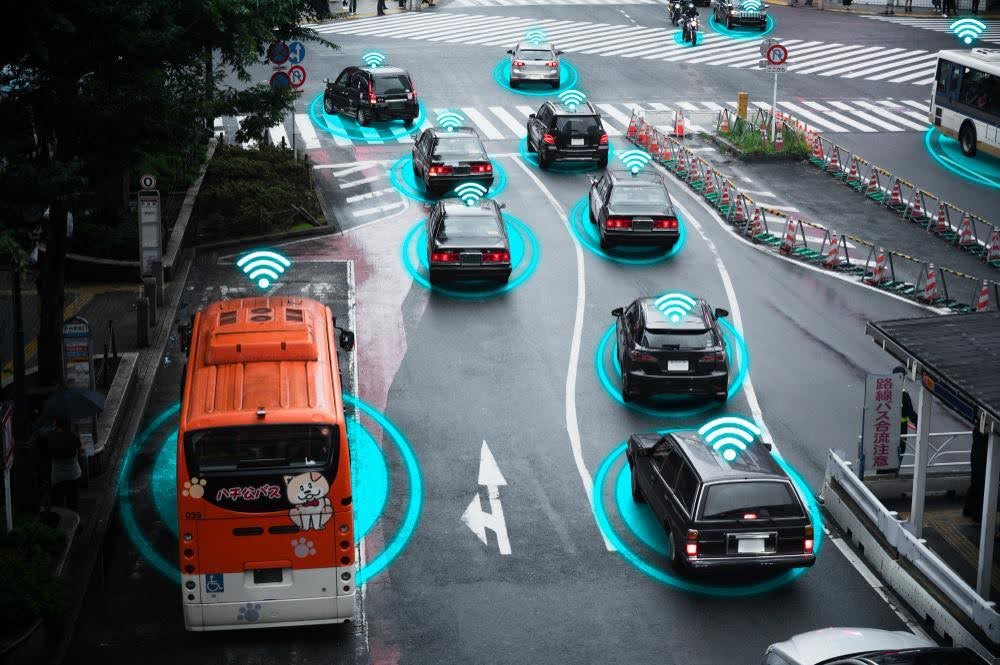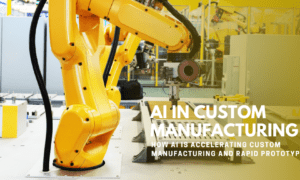In the previous section of the article, Maria Greicer, VP of Partnerships at Keymakr, explored the global landscape. Some markets take a bold approach and embrace experimentation, while others are more conservative and prioritize safety.
This section highlights the top industries leading the way, examining the key drivers behind their growth and the broader implications for AI development, adoption, and global competitiveness.
Automotive Run the World
Currently, the number one domain for machine vision AI development is autonomous driving capabilities. The battle is over the market share of the future of transportation. The core capabilities of self-driving vehicles include surrounding recognition, such as pedestrians, other vehicles, road markings, etc., and in-cabin monitoring.
Multinational corporations and small startups worldwide are working toward developing systems that will enable fully autonomous driving.
Over the past few years, Tesla has expanded its efforts to build fully autonomous road vehicles – Statista says. This has resulted in them holding the major share of operational cars collecting data for autonomous driving use, at 2.7 million. This could be data regarding recorded road accidents or problems with the autopilot system. The second most significant participant in data collection was Xpeng with 270,000 cars. Finally, Waymo, Baidu, Pony.ai, and Cruise show significantly smaller fleet sizes in collecting data, ranging from 1,000 to as low as 300 cars.
Where will we see full autonomy first?
While many companies tackle the same problems, their approaches and applications differ. Autonomous capabilities are expected to become mainstream soon. Still, they will likely first take hold in closed environments without humans — such as warehouses and closed industrial facilities — as human unpredictability and the consequences of a machine making a mistake involving human accidents are less tolerated.

Another key aspect of autonomous driving that is gaining attention is in-cabin monitoring. Modern vehicles are increasingly equipped with cameras that look outward and monitor the driver and passengers inside. The last one plays a crucial role in improving passenger safety.
These systems can detect signs of distracted or drowsy driving. For example, if a driver is tired or turns to check on their child in the back, the system can recognize this distraction and take action. The goal is to make vehicles autonomous and intelligent, understanding what’s happening inside the cabin to enhance overall safety.
“Keymakr notices a great demand for these solutions through the prism of data creation. After all, datasets prepared specifically for custom requests and scenarios are very important for in-cabins — they cannot be found in photo tocks or generated synthetically. Recently, many of Keymakr’s automotive clients have been requesting annotation solutions and data creation for their edge cases to improve their model,” says Maria Greicer.
Agriculture: developing crop management and disease detection
Another exciting and rapidly growing application of machine vision AI is in agriculture. Over the last two years, there has been a surge in investment in AI for crop management and disease detection. Traditionally, farmers relied on manual inspections to identify plant diseases, a labor-intensive and sometimes inaccurate process. Highly advanced AI systems can take over these tasks, improving precision, efficiency, and yield predictions.
These AI-driven agricultural systems help:
- Detect diseases early, reducing crop losses.
- Optimize pesticide and fertilizer use, lowering costs and minimizing waste.
- Improve overall food quality and production efficiency.
- Robots and cameras work 24/7 and can reach higher coverage than humans, which makes this technology way more efficient and profitable than traditional human labor

By integrating machine vision AI, the agricultural industry can increase productivity, reduce environmental impact, and enhance food security — making it one of the most promising fields for AI adoption.
The global market size of precision agriculture was expected to grow from approximately over $6 billion in 2021 to about $16 billion by 2027.
Medicine and Endless Possibilities
The medical AI sector has grown significantly over the last year and is expected to grow exponentially. Notably, AI does not replace specialists but acts as a decision-support tool and provides fast responses in complex scenarios.
For example, leading global companies are developing technologies that assist in complex heart surgeries, discover tumors, and use AI in ER rooms to identify life-threatening issues instantly. These technologies save lives.

One common element is that they all utilize the power of visual AI, i.e., they analyze visual data such as MRI scans, X-rays, Ultrasound, and any other medical imagery or video.
Given that the end of 2024 and the beginning of 2025 have been boom periods for medical annotation, we can expect even more technological innovations and greater integration of artificial intelligence in upcoming developments.
“And as we’ve seen from recent projects, the possibilities are truly endless,” says Maria. “For instance, we’ve worked on groundbreaking cases like annotating complex MRI scans for a leading healthcare provider, which helped enhance their diagnostic AI system to identify rare conditions with high accuracy. We’re seeing an increasing demand for hybrid solutions that combine the efficiency of automation with the meticulousness of human review by industry experts, from cardiologists and radiologists to dentists or ophthalmologists. This hybrid approach ensures accuracy, vital in healthcare, specifically radiology and pathology, where even the smallest oversight could have significant consequences. The next wave of advancements will include more refined datasets for training AI in early disease detection, surgery assistance, and personalized treatment planning.”



































